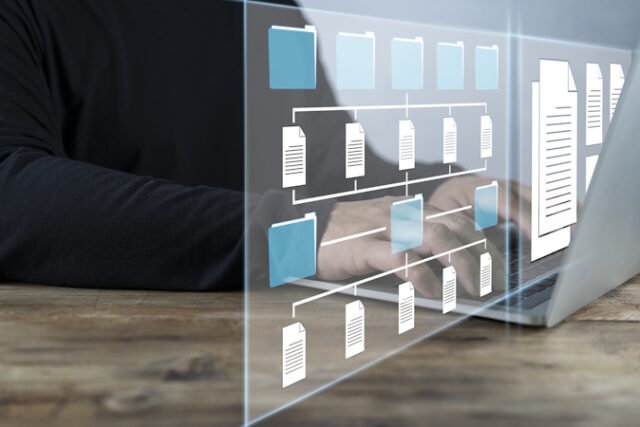
Optical Character Recognition (OCR) has been a game changer in terms of document automation. OCR enables organizations to extract text from images, PDFs, and scanned documents easily.
However, as businesses handle more complicated and diverse documents nowadays, OCR by itself has certain limitations:
- Error with Complex or Low-Quality Documents: OCR struggles with poor-quality scans and documents with low resolution or unclear text. In complex documents—handwritten notes, faded text, or distorted images—OCR can fail to recognize characters correctly, leading to errors in data extraction.
- Can’t handle Unstructured Data and Contextual Information: OCR is designed to extract text but is limited in its interpretation of context. It can’t comprehend semantic information within the document, like what a word means in a particular context, or recognize relationships between different pieces of data.
- Challenges in Extracting Complex Data (Tables, Forms, Handwriting): OCR struggles with complex layouts, tables, forms, and handwriting. These documents require more advanced understanding and interpretation, which is where deep learning comes in to improve accuracy and efficiency.
Deep Learning: The Next Step Beyond OCR
To overcome the limitations of OCR, deep learning has emerged as the next big thing in intelligent document processing (IDP). Deep learning, specifically neural networks, enables systems to go beyond basic text recognition and add an extra layer of understanding, making document processing more accurate, flexible, and capable of handling complex tasks.
What are Deep Learning and Neural Networks
Deep learning involves algorithms inspired by the human brain that can automatically learn patterns from vast amounts of data. In document processing, these models can learn to understand documents at a deeper level, interpreting both the text and the structure of the document in a way OCR can’t.
How Deep Learning adds Semantic Understanding to Document Processing
One of the key strengths of deep learning is its ability to introduce semantic understanding into document processing. Rather than just recognizing characters and words, deep learning models can understand the relationships between data points, the context in which words appear, and the document’s meaning. This context-aware interpretation allows IDP systems to extract more accurate and meaningful data.
OCR with Deep Learning for Better Accuracy
By combining OCR with deep learning, IDP solutions can achieve much better accuracy. OCR extracts the text, and deep learning models correct the errors and add context-aware interpretation. This combination enhances the overall performance of intelligent document processing platforms.
Deep Learning Techniques for Document Processing
Convolutional Neural Networks (CNNs): Advanced Image Processing for Document Layouts
CNNs are a type of deep learning model designed for image-based tasks such as document processing. CNNs can analyze document layouts such as headers, footers, and paragraphs and distinguish between different document structures. They improve accuracythe of data extraction by identifying key components in a document, even in complex or distorted formats.
Natural Language Processing (NLP): Context-Aware Text Extraction and Classification
NLP is about the relationship between words, their meaning, and the context in which they are used. By incorporating NLP into IDP, systems can go beyond simple text recognition to understand the meaning of text within a specific document context. For example, NLP can help determine if a date in a document is a due date or a creation date, enhancing the overall understanding of the data.
Recurrent Neural Networks (RNNs) & Transformers: Improving Sequential Data Interpretation
RNNs and transformers are deep learning models that are meant to process sequential data like sentences and paragraphs in a document. The models are very capable of processing text that depends on context in time, enhancing data extraction from unstructured data sources and long document processing.
Self-Supervised Learning: Minimizing the Requirement of Large Labeled Datasets in Document Automation
Self-supervised learning revolutionized deep learning since the models can now learn from data without requiring a lot of labeled datasets. Self-supervised learning in document processing empowers the AI models to learn from massive unstructured data like handwritten notes with very little human intervention. This reduces the reliance on labeled data, making the model adaptable to various document types.
Deep Learning in Intelligent Document Processing
Automated Document Classification: Sorting and Classifying All Types of Documents
The most important use of deep learning for intelligent document processing is automatic document classification by content. Contracts, invoices, or receipts – with the help of deep learning algorithms, automatic identification and sorting are possible, minimizing workflows.
Extracting Data from Complex Tables and Forms: Enhancing Document Parsing Ability
Deep learning algorithms can extract structured data from complex forms and tables. They can recognize and read rows, columns, and cells despite the document being scanned or having multiple layouts. This improves the accuracy of data extracted from forms, tables, and PDFs.
Handwriting Recognition: Overcome constraints of manual document processing
With deep learning models, handwriting recognition has reached new heights. By using CNNs and other neural networks, deep learning can decode handwritten text, making it a powerful tool for processing handwritten forms, notes, and signatures.
Named Entity Recognition (NER): Extracting Key Information (Names, Dates, Addresses)
NER is an NLP technique that identifies specific pieces of information within a document, such as names, dates, and addresses. By using deep learning to enhance NER, IDP systems can extract critical data from a document more effectively and efficiently, providing more value.
Multilingual Document Processing: Improving Performance Across Different Languages
Multilingual support is another area where deep learning excels. By using transformers and other deep learning architectures, IDP systems can process documents in multiple languages, breaking language barriers and improving document processing globally.
Disclaimer
The information contained in South Florida Reporter is for general information purposes only.
The South Florida Reporter assumes no responsibility for errors or omissions in the contents of the Service.
In no event shall the South Florida Reporter be liable for any special, direct, indirect, consequential, or incidental damages or any damages whatsoever, whether in an action of contract, negligence or other tort, arising out of or in connection with the use of the Service or the contents of the Service. The Company reserves the right to make additions, deletions, or modifications to the contents of the Service at any time without prior notice.
The Company does not warrant that the Service is free of viruses or other harmful components












